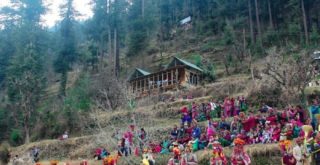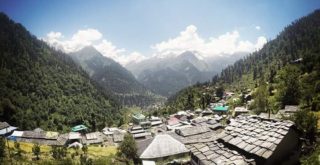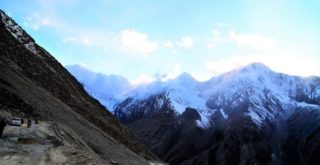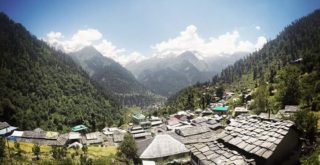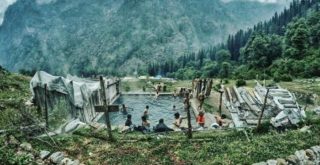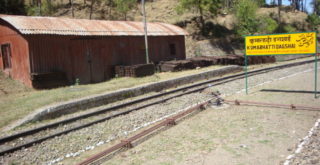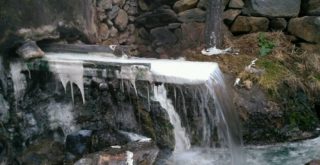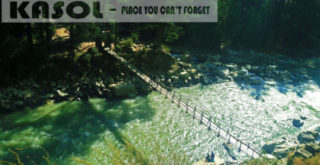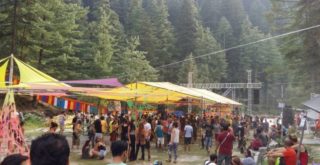India is a land of varying terrain, offering something for every wanderer. The northern part of the country is outlined by the majestic Himalayas, and is characterised by the picturesque peaks of the world-famous ranges. Ladakh (whose capital city is Leh), formerly a part of Jammu and Kashmir, would constitute a dream of a trip to every traveller.
The terrain is composed of not just mountain peaks, but mesmerising natural manifestations of all sorts that are bound to leave you speechless. If you are looking for a thrilling way to rejuvenate yourself, a Leh Ladakh trip cannot help but be on the cards.
Places to visit:
Sangam Point
The prefix literally translating to “confluence”, the Sangam Point is understandably a place where the rivers Indus and Zanskar meet. Located in Nimmu which the Leh-Srinagar highway passes through, the point is often skipped by typical Leh-Ladakh tours and yet remains a favourite for the more ragged sort of travellers involving bikers and backpacking purists. The point where the rivers meet makes for a jaw-dropping sight, and the mountains as the backdrop serve to elevate what is already a magnificent experience. The Sangam Point also includes a river-rafting service, allowing some bang for your buck while cruising through the ravine.
Alchi Monastery
Originating from the rich history of the land, from the architectural craftsmanship of Rinchen Zangpo in the 10th Century, Alchi Monastery is known to be the oldest monastery in the union territory and is basically a monasterial complex located in the village of Alchi in the Leh district. The architectural genius of the monastery is exemplified by both its interior and exterior, through an effortless blend of Tibetan and Kashmiri styles. Being a quintessentially Buddhist shrine, it houses a large statue of Buddha, encircled by the Temple of Manjushri, the Dukhang and the Sumtek. Should you be interested in the culture of the land, this monastery is a necessary inclusion in your Leh-Ladakh tour.
Stok Palace
The Stok Palace is another attraction to inhabit the core of the Ladakh tour, Leh, and is a stupendous example of the variety of architecture that commingles in Ladakh. Built more than two centuries ago in 1820, it was constructed in what is considered by historians to be the heydays of the Namgyal Empire. The architecture holds distinct resemblance to those employed in the Indus Valley civilisation, and the palace is considered to be the first step towards fortified architecture in the area. The palace has since been converted to house partially a hotel and a museum within its premises.
Stakna Monastery
Ladakh is a land of inexhaustible culture and religious background, and the land never ceases to amaze. The Stakna Monastery is yet another testament to the culture of serene harmony that the place embodies. Its name translates to “tiger’s nose” due to the hill it stands on, the monastery is located just a few kilometres outside Leh and is known for being the only Drukpa Kagyu monastery of Bhutanese origin in the union territory. The monastery is unsurprisingly characterised by its minimalist yet sturdy Tibetan architecture, and is a shrine to Buddhism, housing the sacred Arya Avalokitesvara statue in its hearth.
Jama Masjid
If one were to ever seek a symbol for the unmistakable religious and social harmony that Ladakh somberly upholds, they would have to look no further than the Jama Masjid. The origins of the masjid spring from an agreement of brotherhood between the emperor of Ladakh (Deldan Namgyal) and the seat of the Mughal Empire, the construction of the masjid with the addition of a small annual fee being a symbol and guarantee of the former being under the latter’s protection and patronage. The architecture is a blend of Turkish and Iranian descent, and it should be an intriguing place to visit, if it were not for its misogynistic exclusion of women from the actual interiors of the mosque.
Also Read:
Hemis Monastery
Saving the best of the lot for the last, it should be unimaginable for you to visit Ladakh and not stop at the Hemis Monastery. Not only is it arguably the most famous monastery in Ladakh, but reveling in its cultural flamboyance, it is also known for its economic opulence. The property is located forty-five kilometres away from Leh, the destination making every bit of the journey worth the effort expended. Known to have existed before the 11th Century, the architecture of the monastery is characteristically Tibetan, and was refurbished somewhere around the 16th Century, when it became an established shrine for Buddhism. The monastery attracts travellers primarily due to the annual Hemis festival, which lasts two days in and around its premises.
Shanti Stupa
The Shanti Stupa is one of the key attractions that constitute the quintessential Leh-Ladakh tour, and is arguably also one of its most famous. The stupa with its marble white monument situated over a mountain, stands as a commemoration of two-and-a-half centuries of Buddhism, and being famous for standing over a statue of Buddha buried underground, is known to have been built by a Japanese monk. Overlooking the panoramic scape of Leh, the stupa beside its message of world peace is also a genuinely beautiful place to be at, with sunrises and sunsets accentuating its natural serenity to a euphoric stratum.


